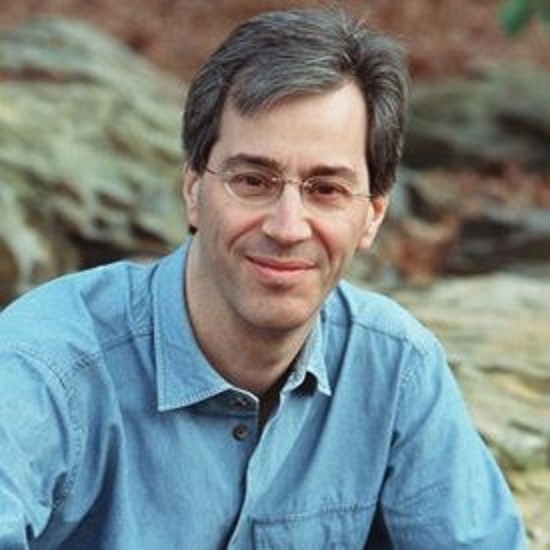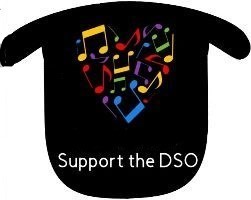Monday Musicale with the Maestro – April 12, 2021 – Cultivating New Music Part 1: Stephen Jaffe’s Still Life with Blue
To bring into the world a sonic structure that heretofore did not exist is not an easy or painless process. But it is among the most profoundly rewarding of experiences, and my years as a composer and avid conductor of contemporary works have made me keenly aware of both things.
I have conducted the premieres of wonderful works by many of America’s finest composers, including Pulitzer Prize winners such as Joseph Schwantner, William Bolcolm, and Robert Ward. And I’ve come to see that the role of the conductor at a first performance is something like that of a doctor delivering a baby! The skills required—and the responsibilities—are enormous. Many premieres have been wrecked by a conductor’s incomprehension or glib attitude toward this challenge. It takes a long time to study a piece that you have never heard before.
But the process is much more difficult for the composer, especially when writing tonal and melodic music. They have the almost insurmountable task of writing something utterly new and compelling from a musical language and “grammar” five hundred years old. Writing a new work entails many hours, days, weeks, months—and yes, sometimes years—of work that will certainly lead to “labor pains.” All this takes patience and a certain amount of confidence that can only be obtained by your optimism as the piece gradually unfolds in your mind. The fear of the empty page paralyzes us all at the start—and then, after a lot of deflecting and procrastination, the work proceeds at last (or it doesn’t).
For me, the next stage is truly the “agony and the ecstasy” part of any project—agonizing in terms of self-doubt, but ecstatic in those blessed times when the ideas come so quickly that you can hardly move your hands fast enough to transcribe them. At such moments, the world disappears, time stands still, and you can suddenly “come to” and realize that you haven’t moved from that spot for several hours! Are these moments of literal inspiration? At such times I have often felt in intimate contact with the God of Music who is whispering ideas into my ear. Sometimes I have suddenly felt my hands move to a note or a series of notes on the piano that I wouldn’t have thought of in a million years—but they turn out to be the right ones! At such times, I’ve felt almost possessed by a force who WANTS this new child delivered into the world. I have only to provide the best structure, “home,” or safe space in which the newborn can live and thrive. Sibelius liked to say of these blissful moments of internal communication, “Music is, for me, like a beautiful mosaic which God has put together. He takes all the pieces in his hand, throws them into the world, and we have to recreate the picture from the pieces.” (Jean Sibelius’ remarks quoted by Jalmari Finne to Anna Sarlin, June 28, 1905, https://www.azquotes.com/author/20270-Jean_Sibelius.)
As a conductor, I think my ability to compose has allowed me fuller access to the musical workshop of the masters, where I can consider not only what they do with a piece, but why. Why is this note an F-sharp, for example, and not an A-sharp? Why is this passage soft instead of loud? This endless process of analysis coaxes me to ask questions that can open deeper layers of interpretation in the work and a create sense of “collaboration,” even with composers long gone. But I reserve an especially profound respect, admiration, and affection for the talent and tenacity of living composers, who brave not only the challenge of the empty page, but also “competition” from the works of Bach, Beethoven, and Brahms—to name only a few. There is no delight like assisting at such a “birth.”
As I’d noted in an earlier blog, American composers (contemporary ones in particular) get short shrift when it comes to programming by major American orchestras, and this is something I’ve spent my life addressing. When I made my Carnegie Hall debut with the American Symphony Orchestra in 1988, I had just been named the unanimous 1st-prize winner of the Stokowski Conducting Competition and had a hand in choosing the repertoire. I used the occasion to insist that my program include the Renaissance Concerto for Flute and Orchestra, a work by contemporary American composer Lukas Foss that I had come to adore. The management balked at first (long story), but eventually they relented, and we gave the work its New York premiere. The delighted composer attended the event, and his composition received a glowing review form the New York Times. As the winner of this prize, I was asked to make a speech before the second half of the concert, a chance I used to affirm my commitment as a champion of American and contemporary music. This was something I had long envisioned as a major part of my career to come—and so it has been!
When I became Music Director of the Durham Symphony Orchestra in 2009, I made clear that part of my mission would be conducting an American work on every program and the premiere of at least one new work by a North Carolina composer every year. In the process, I have championed and mentored young composers of college age or in their 20s, such as Oakley Lyon, Noah Balamucki, and Omar Ruiz-Lopez. And we’ve performed wonderful new works from established masters such as Thomas Jefferson Anderson and Lance Hulme, among others. A particularly delightful collaboration has been our work with acclaimed composer Stephen Jaffe.

Stephen Jaffe was born in Washington D.C. and now lives in Durham, North Carolina. Next year he will celebrate his 40th anniversary on the music faculty of Duke University, where he holds the post of Mary and James H. Semans Professor of Music Composition. Jaffe studied principally at the University of Pennsylvania, where his teachers included the Pulitzer-Prize winning composers George Crumb and George Rochberg. His music has been performed all over the world by major orchestras such as the National Symphony Orchestra, the R.A.I of Rome, and the San Francisco Symphony. Chamber works form a significant portion of his oeuvre, and these have been performed by such prestigious ensembles as the Miami Quartet and the Ciompi Quartet. His awards are many, including The American Academy and Institute of Arts and Letters Lifetime Achievement Award, the Kennedy Center Friedheim Award, and the Koussevitsky International Recording Award.
In 1996, when I first arrived in North Carolina, I was introduced to Stephen, and when I heard his magnificent Violin Concerto, I knew I would like to commission a work from him. A few years after becoming the Music Director of the Durham Symphony Orchestra, I reached out to him with the idea of composing a new work for the DSO. In the fall of 2012, he invited me to his office at Duke University to hear him play through some ideas he had for new works. After a few minutes, as he tells the story, I heard a melodic section that I absolutely loved and shouted out, “That’s it! That’s the piece I want!” I was delighted when he accepted a commission based on this exciting material, and it is the resulting work, Still Life in Blue, which we’re sharing with you as the DSO’s featured selection today.
The title references American “blues” music in the tradition of Gershwin’s Rhapsody in Blue. It also suggests the technique of painting which focuses on one color to reveal the myriad possibilities for light, shade, and hue therein. But this is a playful and poetic allusion. In a recent email to me, Mr. Jaffe referred to the piece as “a loose and spontaneous presence–luxurious, hanging there, a bit like the air in evening, but really, and above all, music.”
Though premiered as a stand-alone work, Still Life with Blue also serves as first movement of Jaffe’s orchestral suite Southern Lights (“Still Life with Blue,” “Cut Time,” “A Smile”). Here are his program notes for the first performance.
Southern Lights is an orchestral suite created at the invitation of Music Director William Henry Curry for the Durham Symphony Orchestra. The music of Still Life with Blue reflects our time and an integral contemporary musical consciousness; it is widely varied, rooted in blues and jazz as in late classical idioms. The slow tempo, sparse orchestration, and rich harmony of Still Life with Blue may conjure an essence of Duke Ellington and Billy Strayhorn’s elegiac style; other sections employ my own boogie feel and follow the music into less easily described territory.
It is a nice coincidence that two of our most recent blogs (March 22 and April 5) mentioned my great love for these wonderful pieces by Ellington and Strayhorn. For if my recollection is correct, it was a shared interest in those works that led to our “bond.”
The premiere of Still Life with Blue was eloquently reviewed by cvnc.org’s Ken Hoover (a composer himself), and his comments show his own deep appreciation for Jaffe’s poignant work:
The opening theme is introduced by the solo trombone, strings come in to support the theme as it is played again by the alto saxophone with the trombone now enriching the harmony. The thematic material is developed rhythmically and harmonically with gentle blues chords. The idiom seems similar to that introduced to us by George Gershwin and Ferde Grofé. It is clearly classical in form and development and clearly jazz in derivation and style. It ends with a gentle timpani beat while the rich jazz harmonies fade to a quiet ending, evocative of watching the sunlight fade behind the hills from a weathered old porch.
(April 14, 2013, cvnc.org)
The DSO’s rehearsals of Still Life with Blue were memorable for both fun and challenge! The piece is moderately difficult and does not reveal its secrets after only one hearing. During rehearsals, I urged the orchestra to see the technical challenges as sportive ones—technical puzzles for us to successfully overcome—and that they did! In the process, of course, we fell in love with the work.
We hope you will enjoy hearing our premiere of Still Life with Blue. I believe it has greatness in it and will one day be in the repertoire of every American orchestra.
Stephen Jaffe
William Henry Curry, Conductor
Durham Symphony Orchestra
William Henry Curry
Music Director
Durham Symphony Orchestra
Comprehensive Editor (Text): Suzanne Bolt
Copy Editor: Marianne Ward & Tina Biello
Digital Layout and Publication: Tina Biello
Video Mixing & Mastering: Max Wang
Celebrating Maestro Curry’s 50 years conducting & 11 years with the Durham Symphony!

“Monday Musicale with the Maestro”
would not be possible without your support!
Thank you for being a important part of the
Durham Symphony Orchestra family!
Funding is provided (in part) by the Durham Arts Council’s Annual Arts Fund, the N.C. Arts Council (a division of the Department of Natural and Cultural Resources), and a grant from the Triangle Community Foundation.
.


